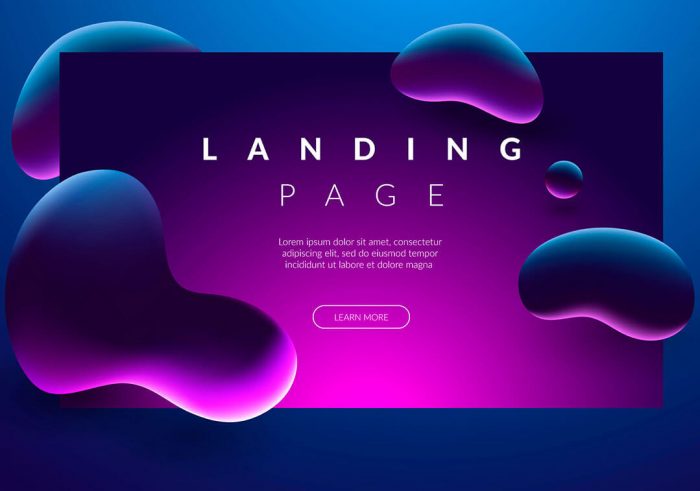- What a website technical specification includes
- How to write a specification and avoid unnecessary errors in the process
- Who prepares the specification and how the process works
- What a properly written specification provides in practice
- How to verify that the specification is ready for implementation
Creating a high-quality website does not start with graphics or code, but with a clear understanding of what the future resource is supposed to accomplish. To ensure the result meets expectations and benefits the business, a detailed and structured document is needed at the very start – one that outlines all key requirements. This is what a technical specification is – a foundational tool that translates the client’s needs into a step-by-step action plan agreed upon by both parties. Having this document helps avoid confusion, save time and budget, and focus efforts on achieving a specific result. The more accurately it describes the functionality, page logic, structure, content, and performance parameters, the easier it becomes to coordinate work with the contractor and assign clear responsibility within the project. Its importance cannot be overstated, so let’s take a closer look at how to correctly prepare a technical specification for a website, what to pay attention to, and how to verify the final document before project implementation.

What a website technical specification includes
When developing the specification, we take a comprehensive approach, with special attention to the following aspects:
- Project goals and objectives. This section clearly formulates business expectations, outlines the purpose of the website, and defines the main actions the site must perform to achieve the desired results.
- Page and block structure. This part details the site’s content, the logic of information placement, and how to create a user-friendly structure for both landing pages and multi-page websites, taking into account the specific nature of each format.
- CMS and integrations. It specifies the content management system the project will use, along with required integrations with external services such as payment gateways, CRMs, or analytics tools.
- Design and responsiveness. This section sets graphic guidelines, visual references, brand manuals, and responsiveness requirements – all of which directly influence usability and the integrity of the design.
- Content and sources. It clearly states who is responsible for creating texts, photos, videos, and other content, in what format materials are to be delivered, and which sources are to be used.
- SEO tasks and technical optimization. A list of measures to ensure basic site visibility in search engines is defined – ranging from page load speed to indexing settings, semantic structure, meta descriptions, and heading hierarchy.
How to write a specification and avoid unnecessary errors in the process
When answering typical questions during the preparation of the specification – what to include in the site structure, how to choose hosting, and what preferences exist for other elements – clients often provide vague input or overlook important details. This leads to confusion, misunderstandings, and additional costs. To prevent this, it’s best to follow a few simple principles:
- Formulate requirements as clearly as possible. The more precise the tasks are, the lower the risk of misinterpretation or incorrect implementation, which directly affects deadlines and coordination.
- Provide examples, prototypes, and references. Visual references help convey your vision more accurately, especially regarding structure, design, or specific features.
- Align all points with the contractor. Every function included in the project must be discussed and confirmed with the developer before work begins to prevent deviations from the intended outcome.
- Set task priorities. This helps the developer allocate resources efficiently and enables the client to oversee execution in a logical order without wasting time on secondary components.
- Clearly define technical parameters. Requirements regarding file formats, content volume, or element configurations should be stated as exact values, avoiding additional clarifications during the process.
- Describe interaction scenarios. Predefined user flows allow for thoughtful navigation, form placement, and page relationships, significantly improving the site’s usability.
- Document the expected system logic. This level of detail prevents misunderstandings during development, simplifies future audits and maintenance, and minimizes the need to revise the specification.
Who prepares the specification and how the process works
The creation of a technical specification is a shared responsibility – not just the client’s or the contractor’s task. This principle explains why so many choose the web studio QuatroIT – we fulfill every client request while also helping structure those requests into a clear, coherent document. The client defines goals, outlines the required features, and shares expectations for the website’s look and functionality. Our team then clarifies the technical details, reviews the overall logic, assesses complexity, and flags any potential risks in advance.
After preparing a project brief, we create the first version of the specification. This includes the core aspects of the future website: functional blocks, CMS type, required integrations, a basic content outline, and an implementation logic. We then go through each section together with the client, clarify all details, note any budget or timeline constraints, and finalize the document. Once everything is confirmed, the specification is handed over for execution and serves as the foundation for the project’s implementation under a formal agreement.

What a properly written specification provides in practice
A well-prepared specification allows accurate estimation of workload and timelines from the very beginning. It becomes a reference point for both client and contractor, simplifying aspects such as technical maintenance and website support, since all parameters are clearly documented and don’t need to be renegotiated. These benefits include:
| Project timeline. | Defined deadlines prevent last-minute rushes, allow phased implementation in a steady rhythm, and help integrate the project into the broader business strategy. |
| Responsibility zones. | When the responsibilities of each participant are documented, communication becomes straightforward, and progress tracking doesn’t require extra tools. |
| Expense breakdown. | A clear work scope enables accurate budgeting, accounting for related costs and avoiding unexpected charges, which positively impacts the overall budget. |
| Website structure planning. | The full page hierarchy, interaction scenarios, and core actions are agreed upon before development starts, eliminating unscheduled changes and maintaining full control over the project specifications. |
| Validation criteria. | Thanks to documented requirements, each stage of development can be compared against the original plan, allowing deviations to be quickly identified and corrected. |
| Project goals. | With clearly defined tasks, well-established communication, and continuous oversight, the final product meets its objectives, delivering consistent results and supporting business success. |
How to verify that the specification is ready for implementation
Once the specification draft is complete, it’s crucial to review its main points to ensure it’s ready for actual implementation. Even minor errors or gaps at this stage can cause major issues later on. Check the following:
- All sections are completed. The document should fully cover the scope of work, including implementation requirements.
- User needs are considered. Every visitor action must be convenient, logically structured, and accounted for in the layout.
- No excessive detail. All requirements are expressed clearly and concisely – overcomplication leads to confusion and hampers execution.
- Sections are internally consistent. Content across different parts of the specification should not contradict or undermine each other.
- The document is practical to use. The specification should be easy to read, well-structured, and understandable for everyone involved – from project managers to developers.
Interested in turnkey website development but unsure of the final vision? Want to be certain your site will truly attract clients and contribute to your business success? Then trust the preparation of your technical specification – and its implementation – to a professional team. At QuatroIT web studio, we take a comprehensive approach to each project, flexibly adapting it to the specifics of your business. This allows us to deliver exactly the product our clients need. Get in touch – we work for you!











